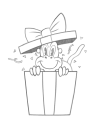Give a gift
Give a gift card for art students to use on anything in the Proko store.
Or gift this course:

About instructor
Founder of Proko, artist and teacher of drawing, painting, and anatomy. I try to make my lessons fun and ultra packed with information.





























Download the photo reference images of seals and sea lions.
Level 1 - Draw from Reference
Draw their gesture and design dynamic shapes using the concepts from this lesson and the previous lesson.
Remember that gesture is not the contour, so don't just copy the outlines. Look for the movement and energy throughout the shapes. Use your whole arm and use the looser sketch line that we learned about.
Level 2 - Draw from Memory or Imagination
Start with the level 1 project and after 5 to 10 poses, turn the page, put away all the reference photos and do more drawings from imagination or from memory.
You can try to invent your own poses and design those shapes to be dynamic. Or you can try to remember the poses you already drew and use those as inspiration. Try to push and design with a focus on drawing dynamic shapes. It doesn't matter how accurate you get to the original photo, it's more about designing the shapes to look dynamic and interesting.
---
Deadline for submissions to be included in the video critique is next Thursday (8/24/23)
* Because of the large amount of reference images, it would help a lot of you include the reference you used for each drawing. I'm more likely to select your submission for the critique. Thank you!